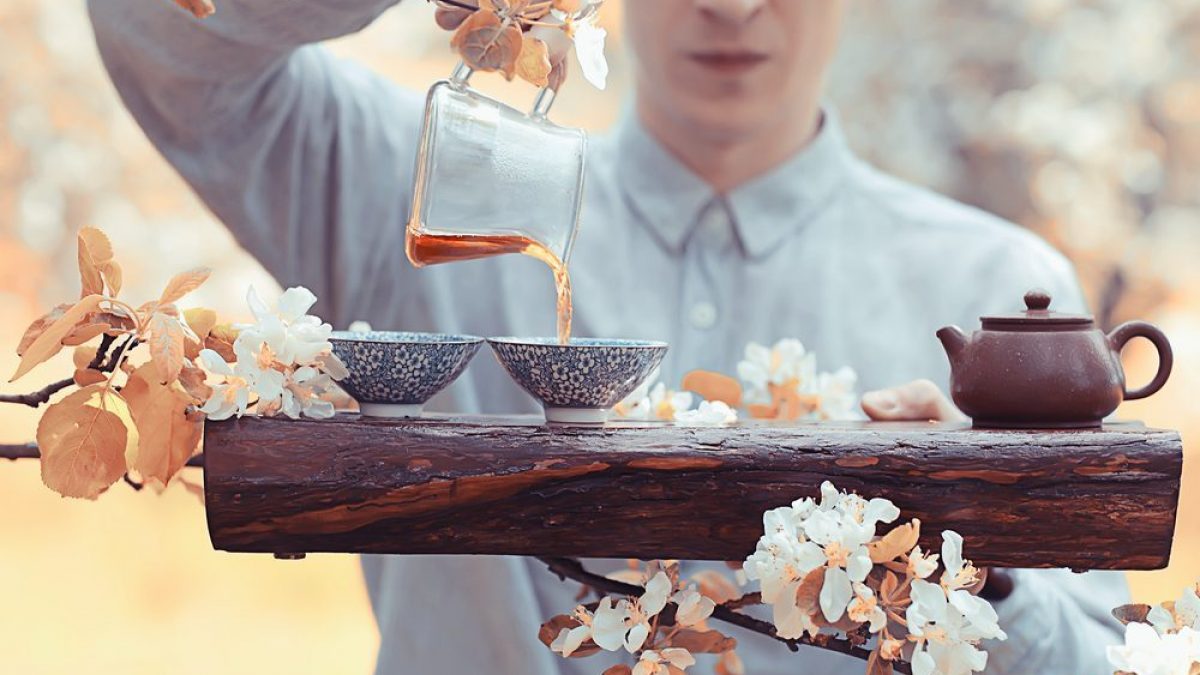
Tea is one of the drinks that has most marked the history and culture of humanity, conquering millions of people with its rich and refined flavors. Its history is very ancient: initially it was an infusion used for medicinal purposes, then over time it became so appreciated that men began to carry the leaves on trips, sharing them and spreading them in the most varied parts of the world. Thus tea began to take on more and more different cultural nuances and little by little different ways of preparing and sharing it began to emerge depending on the people it met. Tea time thus became for many cultures such an important social moment that it was ritualized.
Today there are as many varieties of rituals and ceremonies as there are varieties of tea, and we will accompany you to discover the oldest, the most particular, the most fascinating, on a journey that will take you from China to Morocco, from Turkey to Japan, from England to Tibet.
The Chinese Tea Ceremony: Gong Fu Cha
The connection between tea and China is more than close: it seems that everything was born right here, the land where tea leaves were used first of all as medicine. And not only that, according to some scientists, today's Camellia sinensis plants would be the heirs of wild tea trees that existed in China before the glacial era. Over the centuries, tea has taken on a fundamental role in the lives of the Chinese, who have a different infusion for each period of the year and for each social occasion. Precisely for this reason, the most fascinating, complex and ancient tea ritual is precisely the Chinese one: its first mention dates back to the 17th century.
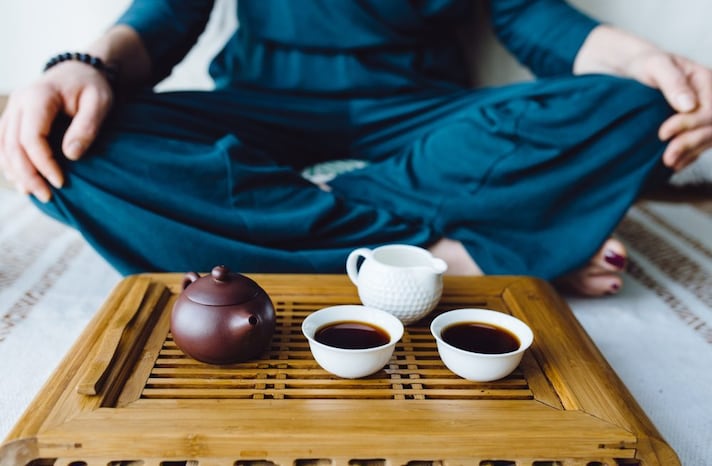
It is called Gong fu cha ("tea prepared with mastery") and is an articulated ceremony that allows you to appreciate the flavor and aroma of tea, but which also aims to instill peace and contemplation. It takes place in a relaxing environment and is an art form that requires a series of accessories and precise steps, such as selecting and rinsing the tea leaves, heating the teapot and cups and pouring the tea in a specific way.
Japanese Tea Ceremonies: Cha no Yu and Senchado
Over the centuries, neighboring Japan has developed a very strong relationship with the tea ritual. As ancient as the Chinese one, Cha no you (literally "hot water for tea") involves the preparation and serving of Matcha green tea powder, of which Japan is a major producer, through a ceremony steeped in symbolism. The movements, precise and measured, must instill a sense of peace and lead the guest to cultivate awareness and appreciate the beauty of the present moment.
The Japanese tea ceremony is usually performed in a tea house or traditional Japanese room and is led by a tea master: today it is characterized by a simpler and more minimalist approach compared to the ancient, more sumptuous and formal ceremony.
Precisely to contrast the rigid etiquette of the traditional ceremony, over the centuries Japan has developed a second, lesser-known tea ceremony, the Senchado, in which the green tea is not ground as in the case of Matcha but left loose and prepared for infusion. It was born precisely to be less codified and with a freer approach aimed at the search for simplicity. The teas used for this rite are mainly high-quality Gyokuro and Sencha and the undisputed queen is the kyusu teapot.
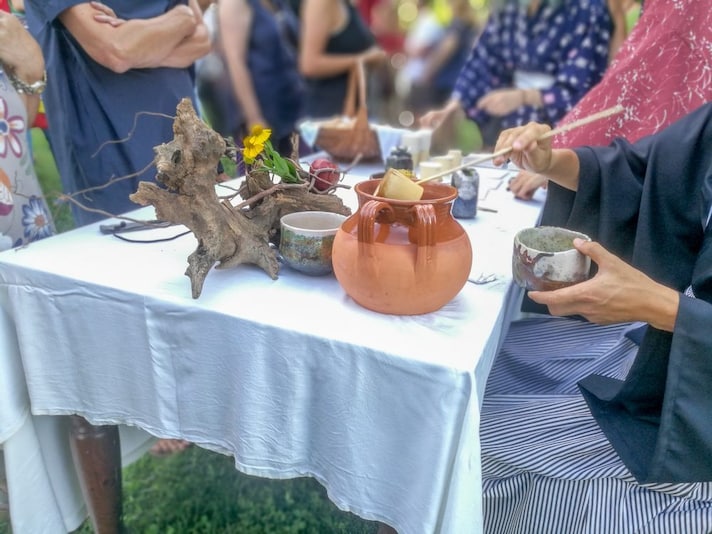
The Korean Tea Ceremony: The Korean Dayre
The Korean tea ritual, specifically in South Korea, is much more recent than other Eastern rituals: it was introduced in 1973 and developed from the philosophy of Zen Buddhism. It is a ritual called Korean Darye in which Panyaro green tea is used a lot, a word that means “dew of enlightening wisdom”. It is a ceremony that aims to relax the mind and body from the frenetic pace of everyday life and, for this reason, it is carried out with very precise and studied steps and times.
The person who prepares and serves the tea is the hostess, who must equip herself in particular with a teapot, oriental-style cups and a typical tool of the Korean ceremony, the cooling bowl: boiling water is poured into it so that it can reach the right temperature for infusion. The tea is then served in two times, first filling the cups from the first to the last by half and then starting again from the last to the first and reaching three-quarters of the volume of each cup. In this way it is ensured that each of those present has the same quantity and quality of infusion.
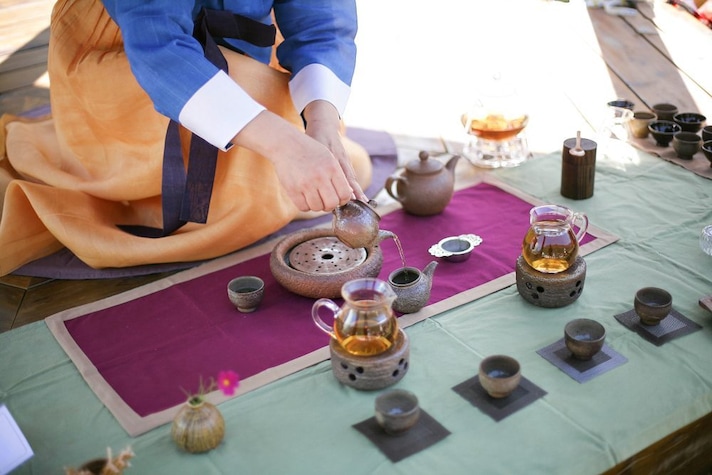
The English Tea Ceremony: Afternoon Tea
Let's leave the complex Eastern rites for a moment to tell you about a tea ceremony that is certainly simpler, but equally iconic and typical of the West. It is the English afternoon tea, officially established by Queen Victoria during her reign but originating from the beginning of the 19th century, when the Duchess Anne of Berford decided to organize afternoon tea meetings accompanied by sweet and savory appetizers.
Also known as Five o'clock tea, English afternoon tea is now a popular and essential social event, served in tea rooms or luxury hotels and often accompanied by live entertainment. This tea date cannot be without the teapot and cups, the sugar bowl and milk jug (English tea is strictly diluted with a drop of milk) and porcelain saucers. Here guests can help themselves to scones, sandwiches, tea biscuits and single portions of cake, the traditional appetizers that are usually served on elegant cake stands.
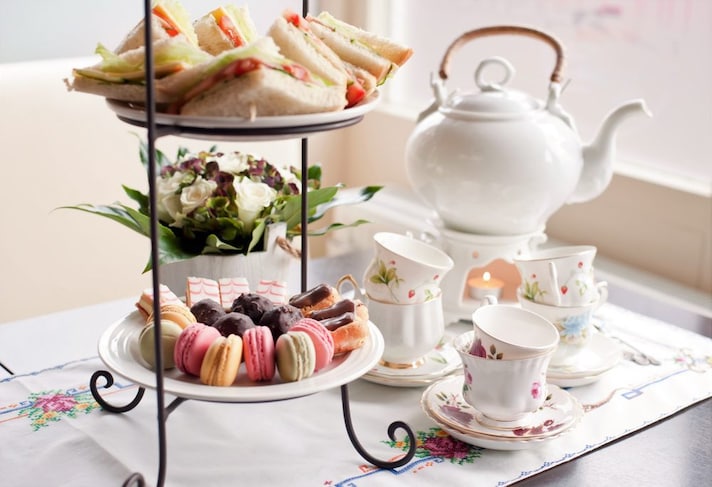
The Moroccan Tea Ceremony
The preparation of tea and the moment of serving it have a fundamental importance in the culture of Morocco, where this ceremony is a way of expressing welcome and hospitality. Typical of this land is mint green tea, an infusion prepared with green tea, fresh mint leaves and a generous dose of sugar, but also Berber tea, a stronger and more concentrated variant used by the people of the southern territories. It is usually served in small, narrow and elongated glasses, where the tea is poured from a metal teapot held very high; the higher the height, the greater the cordiality towards the drinker, and it is also a technique that serves to quickly cool the drink and obtain a layer of foam that is a sign of quality and freshness.
It is prepared and offered by a male person, usually the host or a man trusted by him, who in addition to tea also offers typical sweets and is served on silver or metal trays. Refusing tea is considered very rude, because it is like refusing an offer of friendship and welcome.
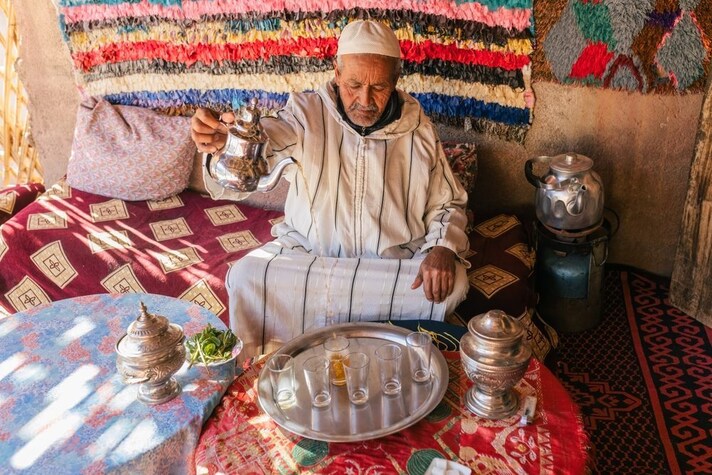
The Tea Ceremony in Turkey
Turkey is one of the world's leading tea producers, and in fact, consuming tea has become a very common practice here too. The Turkish tea ceremony involves an infusion of local black tea in the caydanlik, a set of teapots placed one on top of the other vertically: in the first, a very concentrated infusion is prepared, in the second, the boiling water is kept, which is used to dilute the tea in very particular tulip-shaped glasses. The only addition accepted is sugar cubes, while the typical local sweets called locum are used to accompany the tea. Just like in the case of Morocco, also in Turkey, offering tea is an ancient tradition that symbolizes hospitality, and the act of pouring it is a symbol of generosity.
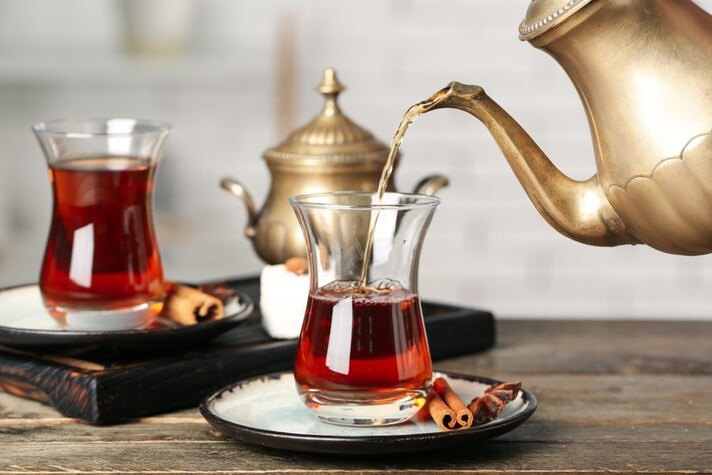
Indian Tea: Masala Chai
Let's go back to Asia to discover a great tea tradition, that of India. It was the English who cultivated and produced tea in this land starting in 1850, but Indian spiced tea is all the fruit of the local population. In ancient times, in fact, the Indians prepared masala, a mix of very aromatic spices for medicinal use: it is precisely this mixture that was combined with black tea, usually the very strong Assam, to create the famous Masala chai, globally known as chai tea.
Let's make it clear right away that there is no single recipe but infinite combinations of different ingredients and procedures; each family has its own mix of Masala chai, usually prepared in small shops or stalls. The mix is infused in water and once ready it is filtered to be served in characteristic "disposable" earthenware bowls (they break at the end, to avoid anyone of a lower caste touching them) together with milk, other fresh herbs and sugar. The result is a strongly aromatic drink, in all respects a daily component of the life of any Indian and a symbol of hospitality, friendship and sharing.
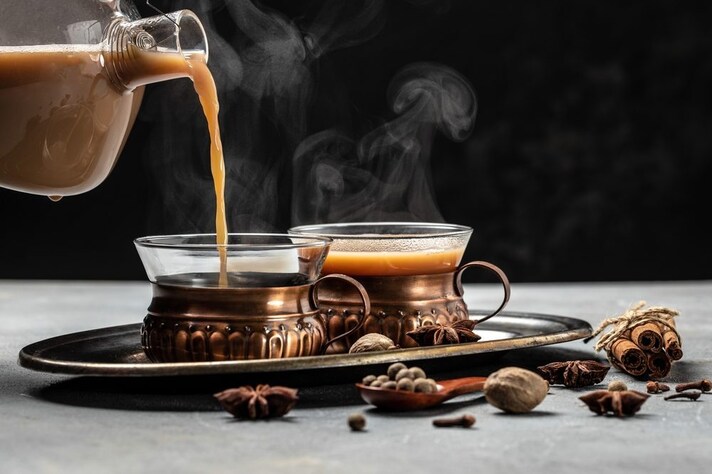
The Tea Ritual in Russia
Russia is not the first country that spontaneously associates tea, and instead even here it is a ritual of some importance, a tradition that arrived via the Mongols in 1638 but that only took hold in 1870, when loose black tea began to be used. This variety is the absolute protagonist of the tea ritual in Russia together with the samovar, a metal kettle inherited from the Mongols, equipped with a tap that allows you to always pour hot water to prepare the tea and dilute its intensity. In the upper part there is a smaller teapot in which the very strong and very concentrated infusion called zavarka is prepared.
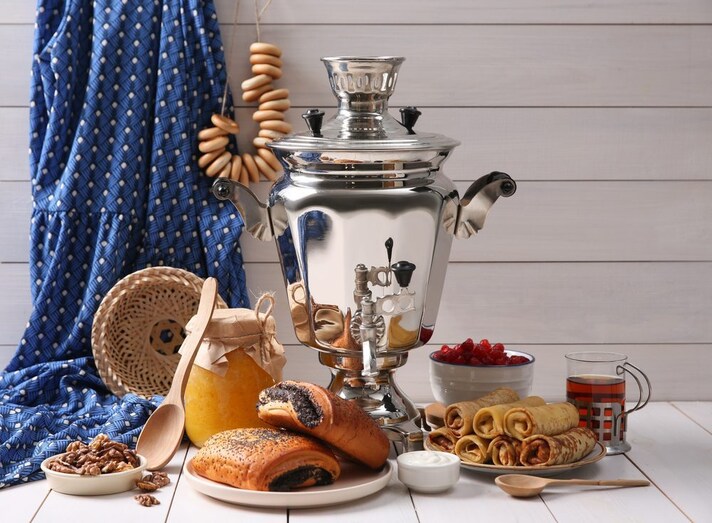
Once ready, the hostess pours the drink and dilutes it with water from the samovar according to the guests' tastes; the glasses are usually made of glass and are placed in special metal containers with a small handle so as not to burn themselves. According to tradition, tea can be enriched with honey or sugar, and is usually served with typical biscuits and syrniki, thick cheese pancakes served with jam.
Tibetan Yak Milk Tea
Less well known than other rituals, tea time in Tibet is a real experience. In fact, visiting foreigners, usually sitting around the fireplace, are offered Bò cha as a sign of hospitality, a truly unique drink in the world: it is black tea boiled in a pot of water to which salt and yak milk butter are added. The mixture is emulsified until a dense, full-bodied drink is obtained, with great energizing and hydrating power, which Tibetans use to face the long winters and prevent altitude sickness. Traditionally, it is served in a wooden cup filled to the brim to ward off bad luck and the guest must drink only half of it: this means that he is appreciating it and wants a refill. If he does not want any more, he must pour the remainder on the ground.
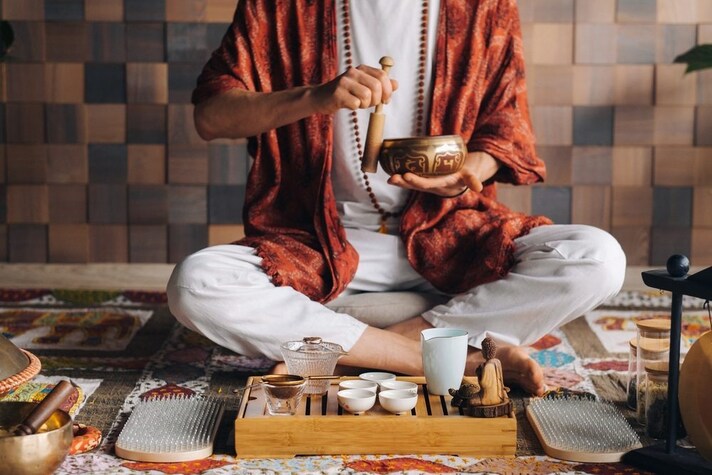
The Modern Ritual Made in USA: The Sun Tea
As with everything that is ancient and traditional, even in the case of tea there are new rituals, novelties born from the advancement of the world and of populations. It is therefore not surprising that the revolution in the world of tea comes from the country that is most advanced in singular inventions, the United States of America: here, in 1879, iced tea was born. It is mentioned for the first time in a recipe book from Old Virginia and in 1870, in Nevada, a meeting is documented in which this sweet, fragrant and refreshing drink was served.
Since then, iced tea has had a notable global diffusion, so much so that today we are used to easily finding it on the shelves of our supermarkets or preparing it at home on hot summer days, but in the southern states of the USA it is still a real ritual, which does not have the elegance of oriental ceremonies or the majesty of the English ones, but which is endowed with a pinch of magic and romanticism all its own. It is Sun Tea, tea infused in the sunlight which heats the water naturally and allows the leaves to infuse slowly. And it should be consumed slowly, in a glass with sugar, lemon and ice.
;Resize,width=767;)
